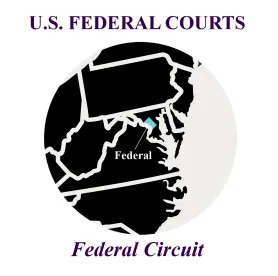The US Court of Appeals for the Federal Circuit affirmed a Patent Trial & Appeal Board (Board) ruling, based on a written description analysis, that certain claims were invalid as anticipated by an earlier priority application from the same family. Indivior UK Ltd. v. Dr. Reddy’s Labs. S.A., Case Nos. 20-2073, -2142 (Fed. Cir. Nov. 24, 2021) (Lourie, J.) (Linn, J., concurring in part and dissenting in part).
Indivior’s patent, which issued from a fifth continuation application claiming priority back to 2009, claimed orally dissolvable films with therapeutic agents. Some of the claims recited numeric ranges, such as “about 40% wt to about 60% wt of a water-soluble polymeric matrix.” Instead of a range, one claim recited a specific amount of “about 48.2% wt” of the polymeric matrix. The patent’s specification did not expressly mention the claimed ranges or the specific 48.2% amount, but it did contain tables comprising quantities of polymer from which Indivior contended a person of ordinary skill in the art could calculate the percentage of polymer by weight.
Indivior argued that the polymer weight percentage limitations were supported by the priority application and, therefore, the patent was entitled to that priority date. Dr. Reddy’s contended that since the polymer weight percentage limitations were added later, an intervening patent publication (Myers) was prior art and anticipated the claims. Indivior did not contest that if Myers was prior art, it anticipated the claims. As a result, the Board’s decision on anticipation under 35 U.S.C. §102 turned on the priority analysis which, in turn, hinged on written description. The Board found that the tables disclosed formulations from which the “48.2% wt” could be calculated and, thus, claims reciting that limitation were not anticipated by Myers. However, the Board found that the claimed ranges (i.e., about 40% wt to about 60% wt) were not disclosed in the specification, and those claims were therefore anticipated by Meyers. Indivior appealed the Board’s anticipation finding, and Dr. Reddy’s appealed the no anticipation finding.
The Federal Circuit first analyzed the specification and concluded that there was no written description support for the broader range of “about 40% wt to about 60% wt.” The Court explained that the range was not disclosed in the specification, the specific values of 40% and 60% were not disclosed and there was another “inconsistent” teaching for weights of “at least 25%.” The Court noted that two specific tables in the specification “do not constitute ranges; they are only specific, particular examples. For written description support of a claimed range, more clarity is required.” The Court explained that “[h]ere, one must select several components, add up the individual values, determine the aggregate percentages, and then couple those aggregate percentages with other examples in the [] application to create an otherwise unstated range. That is not a written description of the claimed range.” The Court applied similar analysis in finding lack of written description for other claims reciting a slightly different range. Ultimately, the Court agreed that there was no written description support for the claimed ranges and the claims were not entitled to the asserted priority date. The Court affirmed that Myers anticipated the claimed ranges.
On cross-appeal, Dr. Reddy’s asserted that the same analysis should apply to the claim that recited “about 48.2% wt” as the polymer amount. Although the Federal Circuit recognized that “one might see some inconsistency between this result and our above holding,” it explained that the Board’s decision was supported by substantial evidence because one of the tables allowed a person of skill in the art to calculate the claimed 48.2% quantity.
Judge Richard Linn dissented from the decision relating to the claimed ranges, arguing that the majority’s view elevated the requirements of written description for ranges to an improperly demanding level. In his view, “the majority cites no authority that written description support for a ‘closed range’ requires a disclosure of a closed range rather than discrete values, and there is no logical reason why such a disclosure should be required as a strict rule to show possession.” Judge Linn joined the decision affirming the finding that the claim reciting 48.2% was supported by written description.
Practice Note: Even though inter partes review (IPR) grounds are limited to §§102–103 challenges, it is possible to obtain rulings that will withstand appeal if there is a basis to contest written description in the context of a priority dispute. Litigating the issue before the Board may benefit petitioners because of the lower burden of proof applicable in IPR proceedings as opposed to the burden applied by a district court.




 />i
/>i

